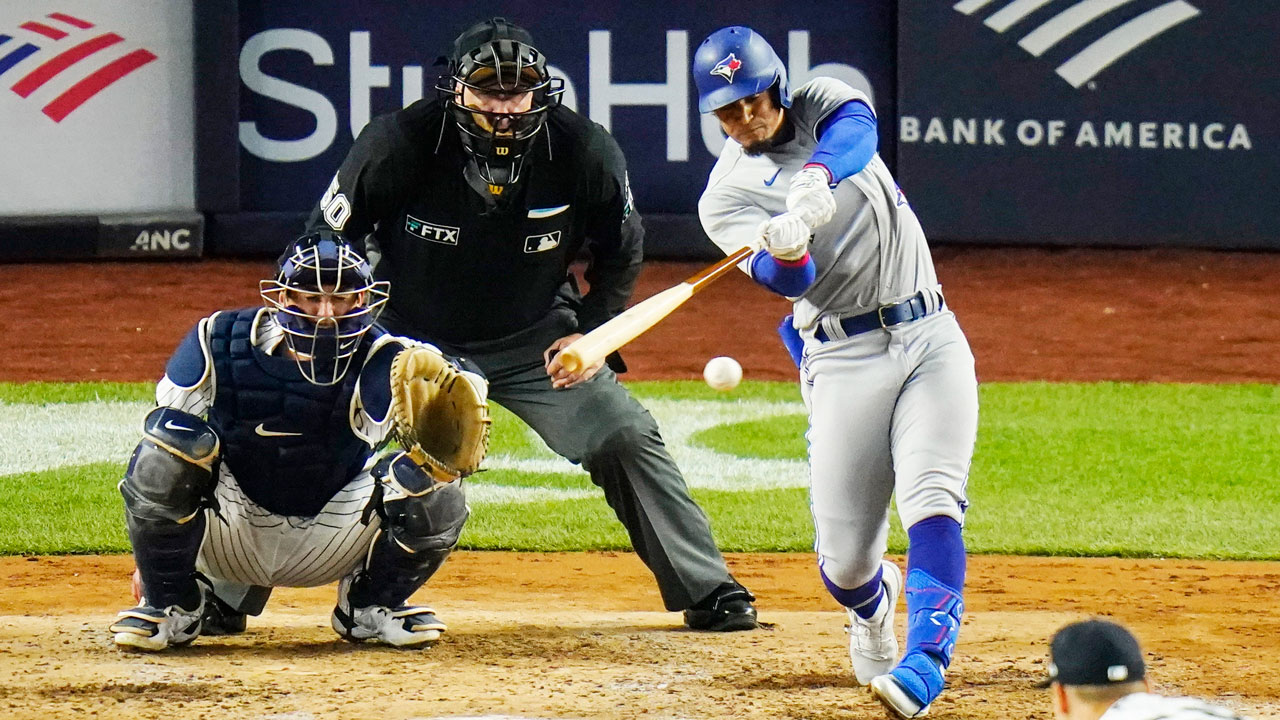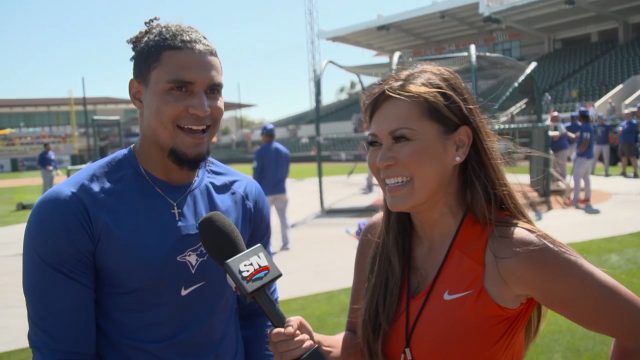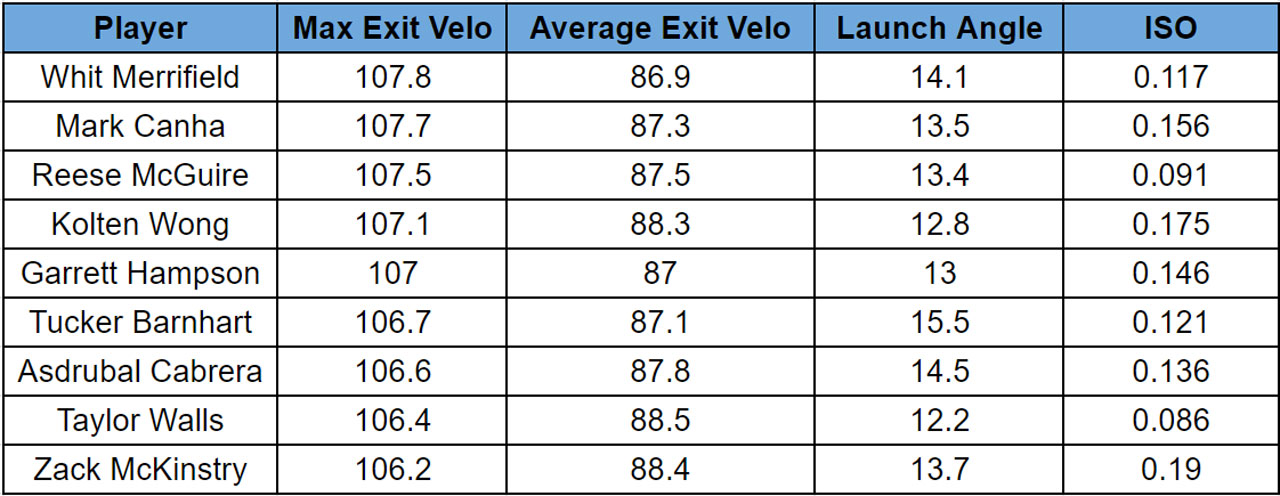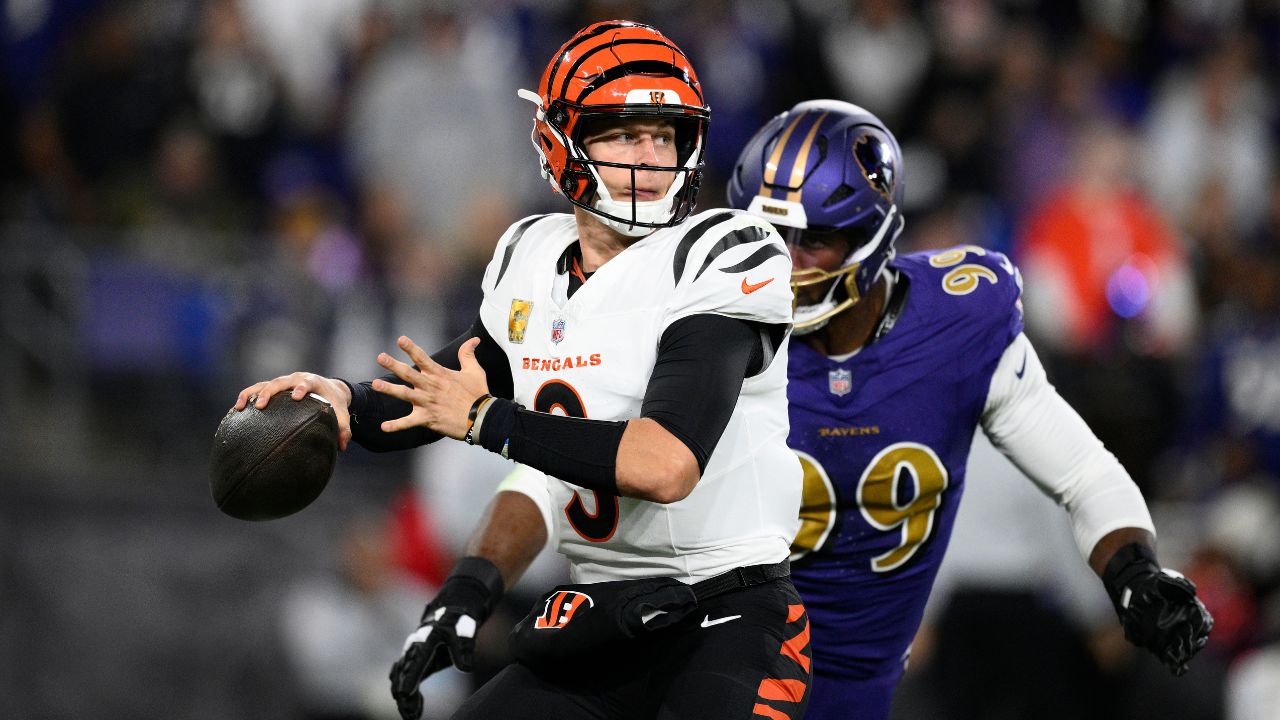
When Santiago Espinal hit two balls in the first game of the 2022 season harder than he’d ever hit a ball in the majors, he became one of the biggest early stories of the Toronto Blue Jays season.
If a player who’s already an excellent defender and contact hitter flashes a new power ceiling that’s going to raise some eyebrows — especially if he added significant muscle mass in the offseason.

The question with Espinal now is how much power he is likely to gain, and what that’ll do for his offensive profile. It’s too early to make definitive conclusions, but we can draw some inferences based on his max exit velocity gain.
Arguably the most important thing to realize when examining Espinal’s power is that he’s starting from an extremely low baseline. Of the 404 hitters with at least 100 batted balls in 2021 his max exit velo of 104.2 ranked 399th. He managed a slightly higher 104.4 in 2020, but that would’ve also ranked 399th in the same sample. In 2021, his ISO of .094 was 335rd among the 362 hitters who made at least 200 trips to the plate.
Put another way, the Espinal we’ve seen coming into 2022 was quite literally one of the least powerful hitters in the game.
In that context, it’s unsurprising that even a fairly significant max exit velocity gain would still rank Espinal in the bottom half of the league. This 106.9 mph double, which blew away Espinal’s career-high for exit velocity, would’ve only brought him up to 369th on the aforementioned list of 404 hitters.
It’s notable to see Espinal produce two Barrels in his first six games of 2022 after managing just four in his previous 119 games as a big leaguer, but this increase in power hardly seems likely to make him a slugger.
If we take the infielder’s 2.5 mph max exit velocity gain and extrapolate an identical 2.5 mph average exit velocity gain we should be able to find comparable players whose power he might be able to emulate in 2022.
The following is a list of players who, in 2021, had a max exit velocity within one mph 106.9, an average exit velocity within one mph of 87.8 (Espinal’s 2020-21 average + 2.5) and a launch angle within two degrees of his career average of 13.8 — to avoid players with radically different swing planes:
There are some good players on that list, but it isn’t exactly a murderer’s row of power hitters. Canha led the group with 17 home runs and only Wong and McKinstry joined him posting above-average ISO numbers. The average ISO for this group was .135, which is approximately what Cavan Biggio managed (.132) during a truly lost 2021 season.
While this group of comparable might seem grim for Espinal, that’s not necessarily the case. If he was able to put up an ISO of .135 last year his slash line would’ve been an impressive .311/.376/.446 — good for a .822 OPS that would’ve put him in spitting distance of Bo Bichette (.828). That’s far from a fair projection for 2022 considering Espinal outperformed his Expected Batting Average by .044 last year, but it illustrates the difference even a little more thump can make.
Because Espinal does everything but hit for power so well, even a slight boost in that area could change how we perceive him as a player. He’s probably not on his way to becoming a home run machine, but his offensive profile has a chance to become more balanced.
Based solely on what he’s shown in six games it seems likely that Espinal will improve his ability to produce extra-base hits in 2022. In the next 156 games, it will be fascinating to watch whether he’s able to break through the exit velocity ceiling he demonstrated on Opening Day and give us cause to re-evaluate his power potential once again.









